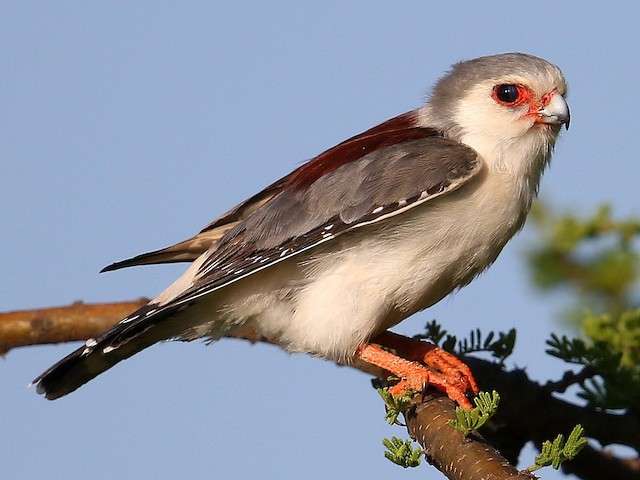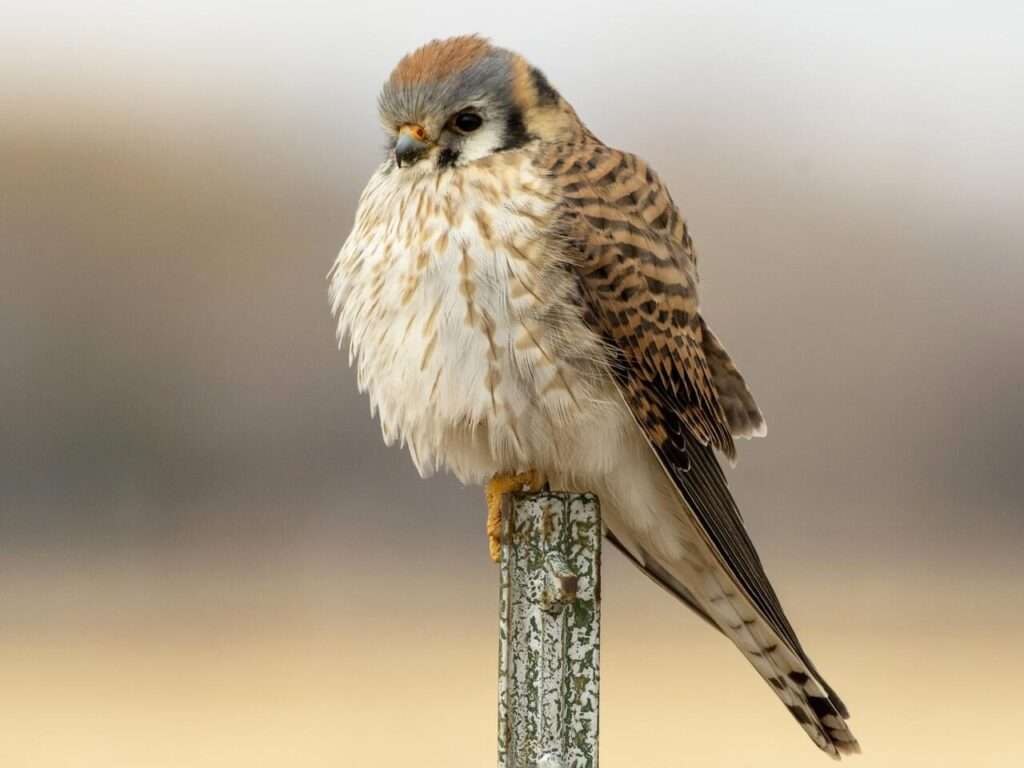
Description
Life span: Up to 17 years
Warm-colored, gray-brown (also referred to as “sandy”) above, and pale with some dark mottling below, the prairie falcon has warm plumage. The darkest area of the upper side is the major wing feathers, while the lightest area is the rump and tail, especially the outer tail feathers. a white line above the eye, as well as a narrower “mustache” mark on the skull resembling that of a peregrine falcon. The axilla and underwing coverts are black, with the exception of the leading edge of the wing. As a result, each wing develops a “strut” effect from the body.
Native Region/Habitat
The prairie falcon prefers open spaces throughout the summer, especially arid areas like high desert, shortgrass prairie, and alpine tundra. In the winter, it can occasionally be found in towns as well as low deserts. It breeds in the Mexican states of Baja California, Durango, and northern San Luis Potosi from southern Manitoba, Saskatchewan, Alberta, and south-central British Columbia. Although it migrates much less than the other North American falcons, in the winter it does leave the northernmost and highest elevations of its breeding area.

Behavior
When flying, prairie falcons hold their wings flat or curled up and slightly below the body. When flapping to acquire altitude, their wingbeats are brief and swift, with the smaller male having a faster wingbeat than the female. Prairie falcons pursue their food from perches, in the air while soaring, and during low-level “strafing” flights that can descend as low as 10 feet. A tiny mammal, bird, or bug is often caught in their talons by gliding low (or occasionally stooping from a height) and catching prey off unaware. Before choosing a nesting location on the breeding grounds, Prairie
Falcons soar and vocalize collectively in front of potential nest locations for as long as a month. When courting, the pair’s members roost close to one another, but once the eggs are laid, the male may decide to spend the night apart from the nest. In Oregon, a male’s night roost was typically 3 miles away from the nest. Throughout the breeding season, pairs squat to patrol their territorial borders all day.
As a pet/In captivity
Since they are raptors, prairie falcons are not often kept as pets. The majority of people cannot own a Prairie falcon as a pet, however some people are able to do so in order to practice falconry. People must follow the procedures for becoming a falconer and obtaining unique permissions to maintain “pet falcons” if they want to keep a Prairie falcon as a pet.
Table





